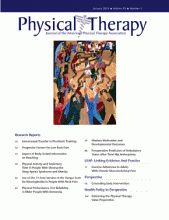In 2009, the United States spent more than $2.5 trillion, or 17.6% of its gross domestic product, on health care.1 Furthermore, expenditures are projected to grow an average of 6.1% per year from 2009 to 2019.1 Long-term performance of the health care delivery system is widely viewed to be unsustainable economically.2 Concern about financial sustainability is magnified by the recognition that increased health care spending does not fully address the needs of Americans or result in higher-quality care or greater patient satisfaction with the delivery system. The Institute of Medicine (IOM) noted that rapid technological expansion and subsequent complexity resulted in safety failures and suboptimal benefits.3 This report, along with other health policy studies,4–6 indicated a high variability in health care delivery across the nation.
Sociodemographic disparities and inadequate access to needed services for many individuals are compounded by the high cost and variable quality of health care.7 In 2010, the Agency for Healthcare Research and Quality (AHRQ) reported that racial and ethnic minorities and individuals with lower socioeconomic status often receive poorer quality of care and have greater difficulty accessing care compared with individuals who are white or who earn higher incomes. Furthermore, 1 in 5 Americans experience delays in or denials of needed health care.8 Inadequate access is particularly troubling given the projected need for services. By 2030, individuals aged 65 years and older will account for almost 20% of the total US population. Approximately 40% of this cohort is estimated to have a disability and is in need of health care services.9
This paradox of high costs, variable quality, and inconsistent access to services in the face of overwhelming …












